Ever felt overwhelmed by the endless options of kitchen gadgets available today? For novice cooks, navigating the world of cookware can be daunting, but it doesn’t have to be! This article will serve as your ultimate cookware guide, outlining essential kitchen tools every home cook should own. With practical insights and helpful tips, you’ll learn how to equip your kitchen efficiently, setting you on the path to culinary confidence!
Why Essential Kitchen Tools Matter
Having the right kitchen tools is crucial for any home cook, especially beginners navigating their culinary journey. Essential kitchen equipment not only streamlines meal preparation but also boosts your confidence in the kitchen. When you have the best kitchen gadgets at your fingertips, cooking becomes less of a chore and more of an enjoyable adventure. Think about how a sharp knife can transform your chopping skills or how a reliable measuring cup ensures that your recipes turn out just right.
Moreover, the right tools foster creativity. Imagine whipping up a gourmet meal with ease because you have a sturdy whisk or a versatile food processor. These gadgets empower you to experiment with new recipes and flavors without the frustration of inadequate equipment. Investing in quality kitchen tools is an investment in your culinary potential; they provide the foundation for mastering techniques and exploring diverse cuisines. So, before you dive into intricate dishes, take a moment to equip yourself with the essentials that will elevate your cooking experience!
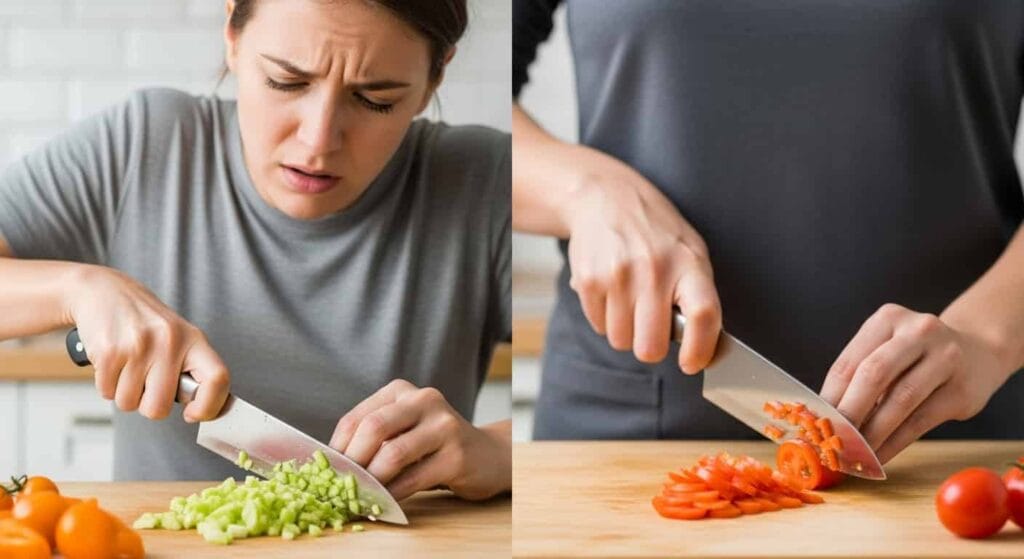
Chef’s Knife: Your Go-To Cutting Tool
When it comes to your kitchen essentials list, a chef’s knife reigns supreme as the ultimate cutting tool. This versatile instrument isn’t just for chopping vegetables; it can handle everything from slicing meat to mincing herbs. With its balanced design and sharp blade, a good chef’s knife can elevate your cooking experience and efficiency.
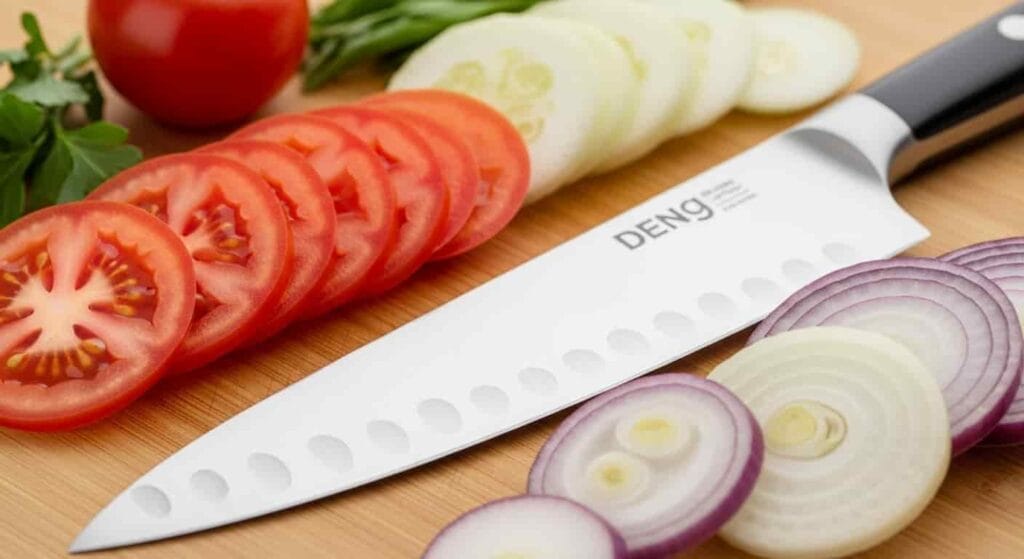
To get the most out of your chef’s knife, consider these key features: a comfortable grip, a well-balanced weight, and a high-quality steel blade. Investing in a quality knife not only enhances precision but also reduces the risk of accidents — dull knives can be more dangerous than sharp ones! Remember to practice proper maintenance, such as regular sharpening and cleaning, to keep your knife in top condition.
Finally, don’t overlook the importance of technique. Mastering basic cuts like julienne, chiffonade, and dice can unlock a world of culinary creativity. Whether you’re prepping for a weeknight dinner or an elaborate feast, your chef’s knife will be the trusty companion you reach for time and again. So, make room in your drawer for this essential tool — it’s the cornerstone of any small kitchen appliances arsenal!
Cutting Board: A Safe Prep Surface
A cutting board is more than just a kitchen accessory; it’s your first line of defense against cross-contamination. Choosing the right material — whether it’s wood, plastic, or bamboo — can significantly impact food safety. Wood boards are known for their natural antibacterial properties and durability, while plastic boards are often dishwasher-safe and easy to sanitize. Understanding these differences helps you select a board that suits your cooking style and hygiene needs.
When using a cutting board, proper maintenance is key. Regularly oiling wooden boards keeps them from cracking and prolongs their life. For plastic boards, ensure you’re using separate boards for raw meat and vegetables to prevent any foodborne illnesses. Additionally, consider investing in a large board with non-slip edges to make chopping easier and safer. By prioritizing a safe prep surface, you can focus more on unleashing your culinary creativity!
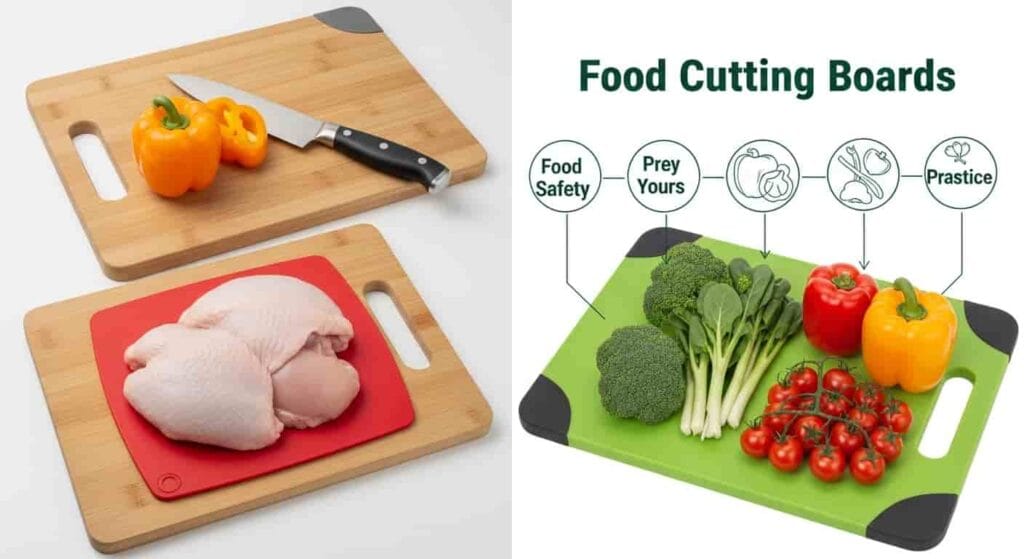
Measuring Cups and Spoons: Precision Matters
When it comes to cooking, precision can be the difference between a culinary masterpiece and a kitchen disaster. Measuring cups and spoons are essential tools that not only help you achieve accurate measurements but also foster confidence in your cooking skills. By using these tools correctly, you can ensure that every recipe is followed to the letter, which is particularly important for baking, where chemistry plays a significant role.
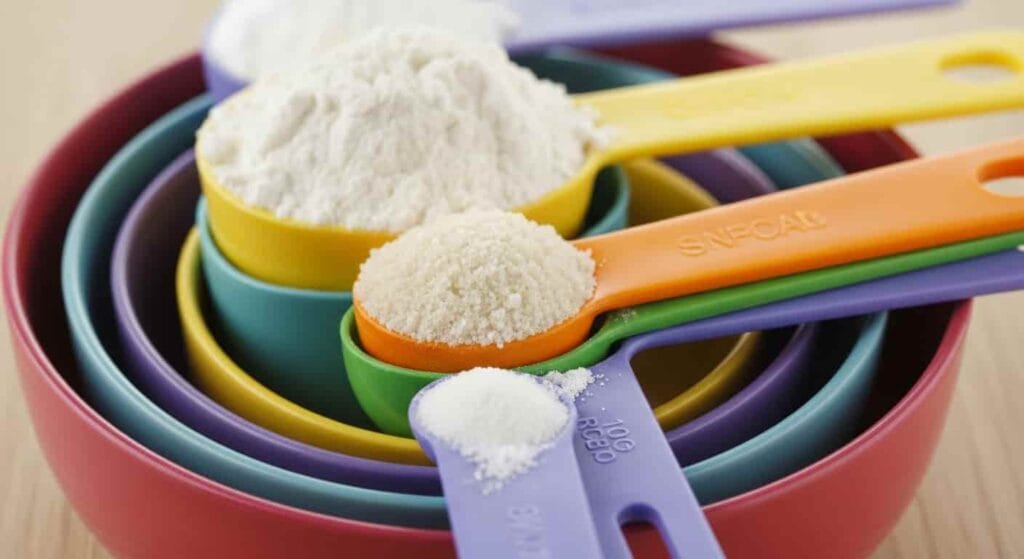
Why Precision is Key
Accurate measurements help maintain the balance of flavors and textures in your dishes. For instance, too much salt can overwhelm a delicate sauce, while insufficient flour can lead to flat baked goods. Investing in a reliable set of measuring cups and spoons allows you to experiment with ingredients without the fear of overdoing it. Plus, many sets come with both metric and imperial units, giving you flexibility whether you’re following an American recipe or one from abroad.
Tips for Effective Use
Level Off Ingredients: Always use a straight edge to level off dry ingredients for accuracy.
Liquid Measurements: Use clear measuring cups with measurement markings on the side to ensure you’re pouring the correct amount.
Consistency is Key: Make it a habit to measure ingredients every time; this will improve your cooking consistency and enhance your overall culinary skills.
By understanding the importance of precise measurements, you’ll unlock a new level of confidence in your cooking adventures. Happy measuring!
Mixing Bowls: Essential for Food Prep
Mixing bowls are more than just simple containers; they are essential tools in the kitchen that can elevate your cooking experience. These versatile vessels come in various materials — glass, stainless steel, and plastic — each offering unique benefits. For instance, glass bowls allow you to see the vibrant colors of your ingredients, while stainless steel options provide durability and resistance to staining. Choosing the right mixing bowl can make a significant difference in your food prep efficiency.
Why You Need Them
When it comes to beginner kitchen equipment, mixing bowls should be at the top of your list. They are perfect for a multitude of tasks: from whisking eggs and tossing salads to marinating meats and preparing batters. The nested design of most sets allows for easy storage, saving valuable cabinet space. Plus, having multiple sizes on hand means you’re always equipped for any recipe, whether it’s a small side dish or a large batch of cookies. Don’t overlook the power of a good mixing bowl; it can inspire creativity and streamline your meal prep process!
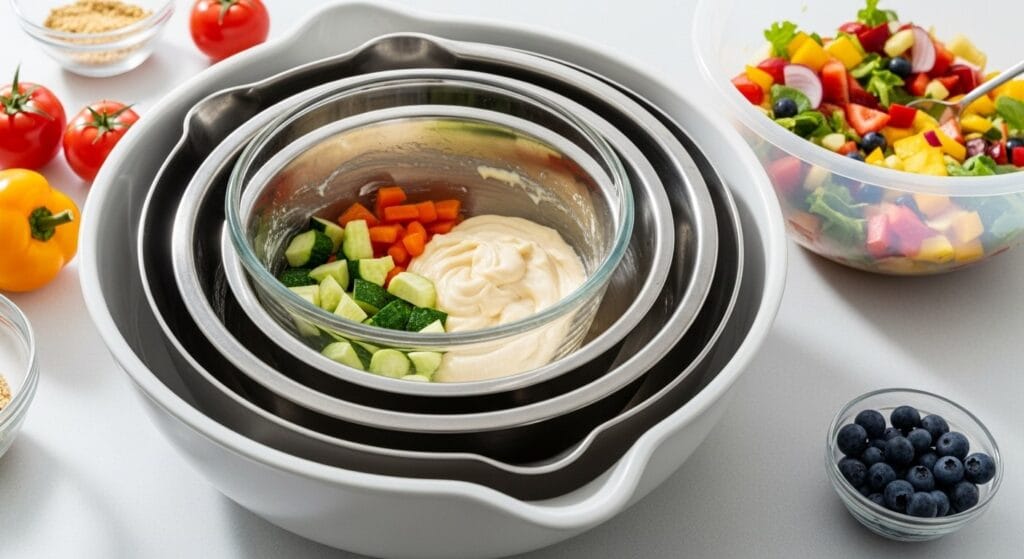
Cooking Pots and Pans: Versatility in Cooking
Cooking pots and pans are the unsung heroes of the kitchen, offering unparalleled versatility that can elevate any culinary experience. Whether you’re simmering a rich stew, sautéing vibrant vegetables, or frying up a quick breakfast, the right pot or pan can make all the difference. With various materials like stainless steel, cast iron, and non-stick options, each type brings its own unique set of benefits to your cooking repertoire.
Features to Consider:
– Material Matters: Choose cast iron for excellent heat retention, while stainless steel provides durability and even cooking.
– Shape and Size: A deep pot is perfect for soups and stocks, while a wide skillet excels at browning meats and sautéing.
– Versatility: Many pots can transition from stovetop to oven, allowing for seamless one-pot meals that save time on cleanup.
Investing in a well-rounded collection of pots and pans not only expands your cooking possibilities but also inspires creativity in the kitchen. Experiment with different techniques, from braising to baking, and discover how these essential tools can transform simple ingredients into spectacular dishes!
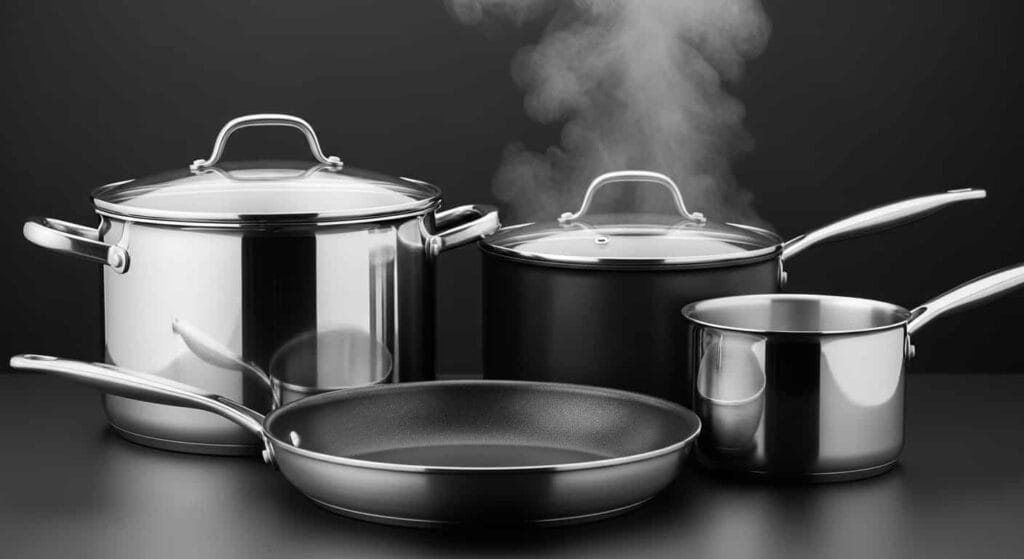
Baking Sheet: Perfect for Oven Recipes
What Is It?
A baking sheet, often referred to as a cookie sheet or half-sheet pan, is an essential flat metal tray designed for various oven recipes. Its low edges allow for easy access and even heat distribution, making it perfect for baking cookies, roasting vegetables, and even crafting sheet cakes.
Features
– Versatility: From sweet treats to savory dishes, baking sheets can handle a wide range of recipes. Imagine crispy roasted potatoes alongside your favorite chocolate chip cookies all on one pan!
– Easy Cleanup: Many baking sheets come with non-stick surfaces or are easy to line with parchment paper, minimizing post-cooking cleanup and making your baking experience more enjoyable.
Steps to Maximize Use
1. Choose the Right Size: Opt for a half-sheet pan (18 x 13 inches) for most recipes; its ample space accommodates multiple items.
2. Avoid Crowding: Give each item enough room to allow for proper heat circulation — this ensures even cooking and crispiness.
3. Experiment with Ingredients: Try using your baking sheet for unconventional items like pizza or even breakfast frittatas — just be ready for delicious surprises!
With a trusty baking sheet in hand, you’ll unlock endless culinary possibilities, elevating your home cooking experience while delighting your taste buds!

Utensils: Must-Have Tools for Serving
When it comes to serving your culinary creations, the right utensils can elevate your dining experience from mundane to memorable. Essential serving tools like ladles, tongs, and serving spoons not only streamline the process but also enhance presentation. Imagine serving a steaming pot of soup with a beautifully crafted ladle or presenting a vibrant salad with elegant tongs — these small details can make a big impact on your guests’ enjoyment.
Key Serving Utensils to Consider:
– Ladles: Perfect for soups and sauces, a sturdy ladle ensures you can serve generous portions without spills.
– Tongs: Versatile and practical, tongs are ideal for everything from tossing salads to serving pasta, giving you control and ease.
– Serving Spoons: Whether for rice, vegetables, or desserts, having a set of serving spoons in various sizes allows you to cater to different dishes effortlessly.
Investing in high-quality utensils not only makes serving more efficient but also encourages creativity in how you present your meals. Choose materials that resonate with your style — wooden utensils can add a rustic charm, while stainless steel offers a sleek, modern touch. Remember, the right tools not only support your cooking but also inspire you to share your culinary delights with flair!
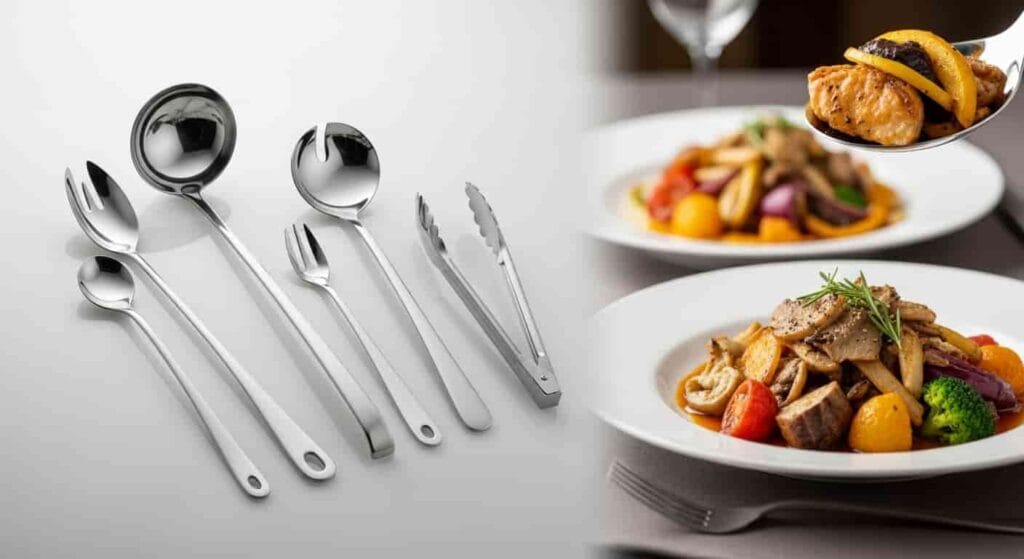
Kitchen Gadgets: Fun Helpers for Efficiency
When it comes to enhancing your culinary experience, kitchen gadgets can be game-changers. Imagine slicing vegetables with a spiralizer, transforming ordinary zucchinis into fun pasta shapes that entice even the pickiest eaters. These gadgets not only save time but also inject creativity into your meal prep, making cooking feel less like a chore and more like an adventure.
Another must-have is the multi-functional food processor. It can chop, slice, shred, and puree, all while taking up minimal counter space. This one tool can drastically cut down on prep time and streamline your cooking process, allowing you to focus more on the flavors of your dish rather than the labor involved in making it. With the right gadgets, you’ll find that efficiency in the kitchen doesn’t have to come at the expense of enjoyment; instead, it can enhance your passion for cooking!
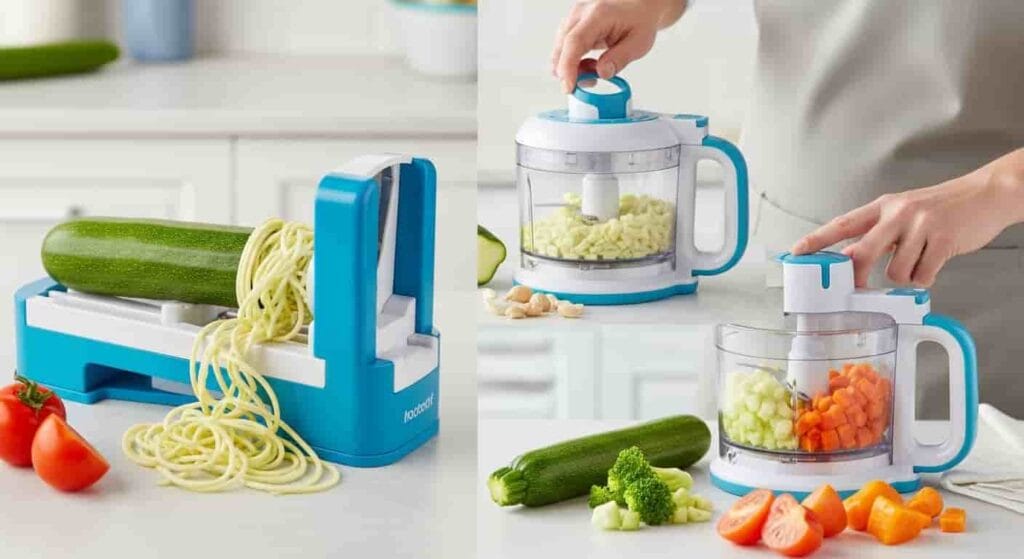
Build Your Kitchen Toolkit Wisely
When curating your kitchen toolkit, focus on versatility over quantity. Instead of filling your drawers with gadgets that serve a single purpose, select tools that can perform multiple tasks. For example, a sturdy chef’s knife is essential for chopping, slicing, and dicing, while a good-quality cutting board can double as a serving platter. This approach not only saves space but also encourages creativity in your cooking.
Consider investing in durable materials that stand the test of time. Stainless steel, cast iron, and high-quality silicone are excellent choices that will enhance your cooking experience and reduce the need for frequent replacements. Additionally, prioritize tools that align with your cooking style — if you love baking, a reliable set of measuring cups and spoons is a must, whereas if you’re into stir-frying, a well-crafted wok should be at the top of your list. Building your kitchen toolkit wisely means choosing items that inspire you and make meal preparation a joy rather than a chore.
FAQs for Essential Kitchen Tools for Every Home Cook
What basic tools do I need to start cooking?
A good starter kit includes a chef’s knife, cutting board, measuring cups, mixing bowls, and a non-stick skillet.
How do I choose the right knife?
Look for a comfortable grip, a balanced weight, and a blade made of high-carbon stainless steel for durability and sharpness.
What are the benefits of non-stick cookware?
Non-stick cookware makes cooking and cleaning easier, as food releases easily and requires less oil for healthy cooking.
Do I really need measuring cups and spoons?
Yes! Precise measurements are key in cooking and baking for consistent results, especially in recipes that require accuracy.
How often should I replace my kitchen tools?
It depends on usage, but generally, you should replace items like non-stick pans every few years, while knives can last longer with proper care
Can I use metal utensils on non-stick cookware?
No, it’s best to use silicone, wood, or plastic utensils to avoid scratching the non-stick surface.
What is the difference between a whisk and a mixer?
A whisk is a hand tool used for blending ingredients manually, while a mixer (stand or hand-held) automates the process for quicker results.
How do I maintain my kitchen tools?
Clean them after each use, store them properly, and sharpen knives regularly to keep everything in top shape!





